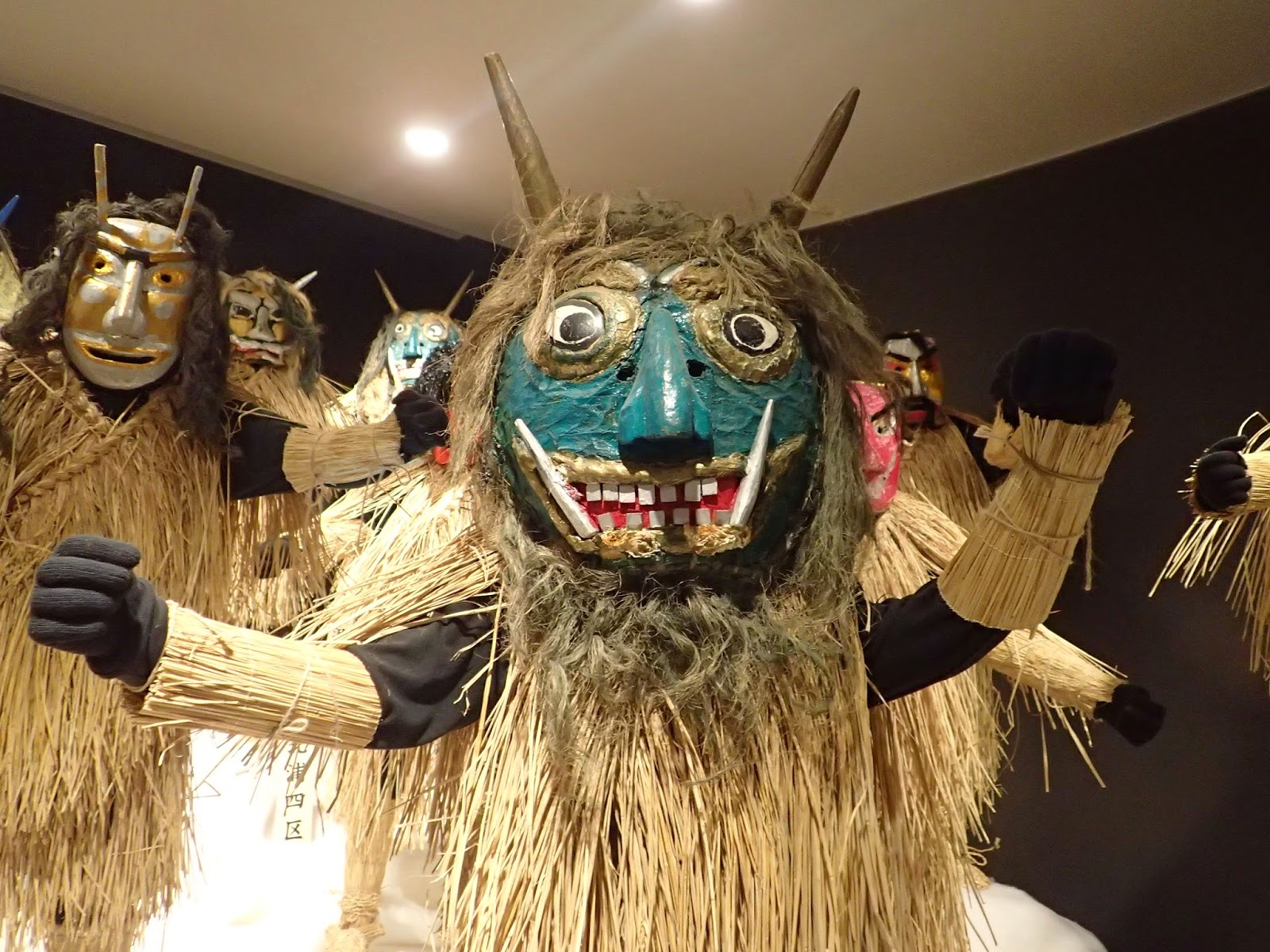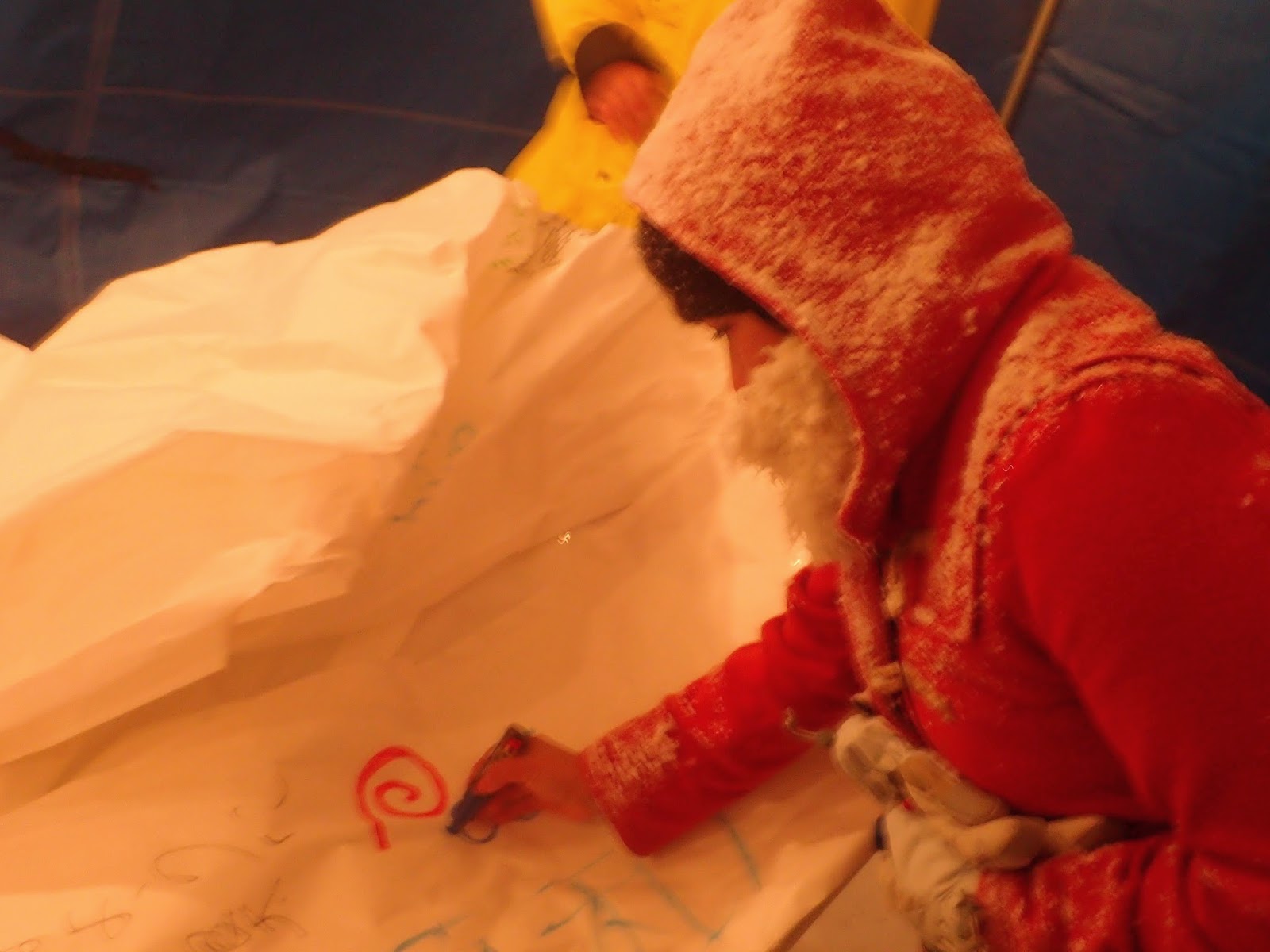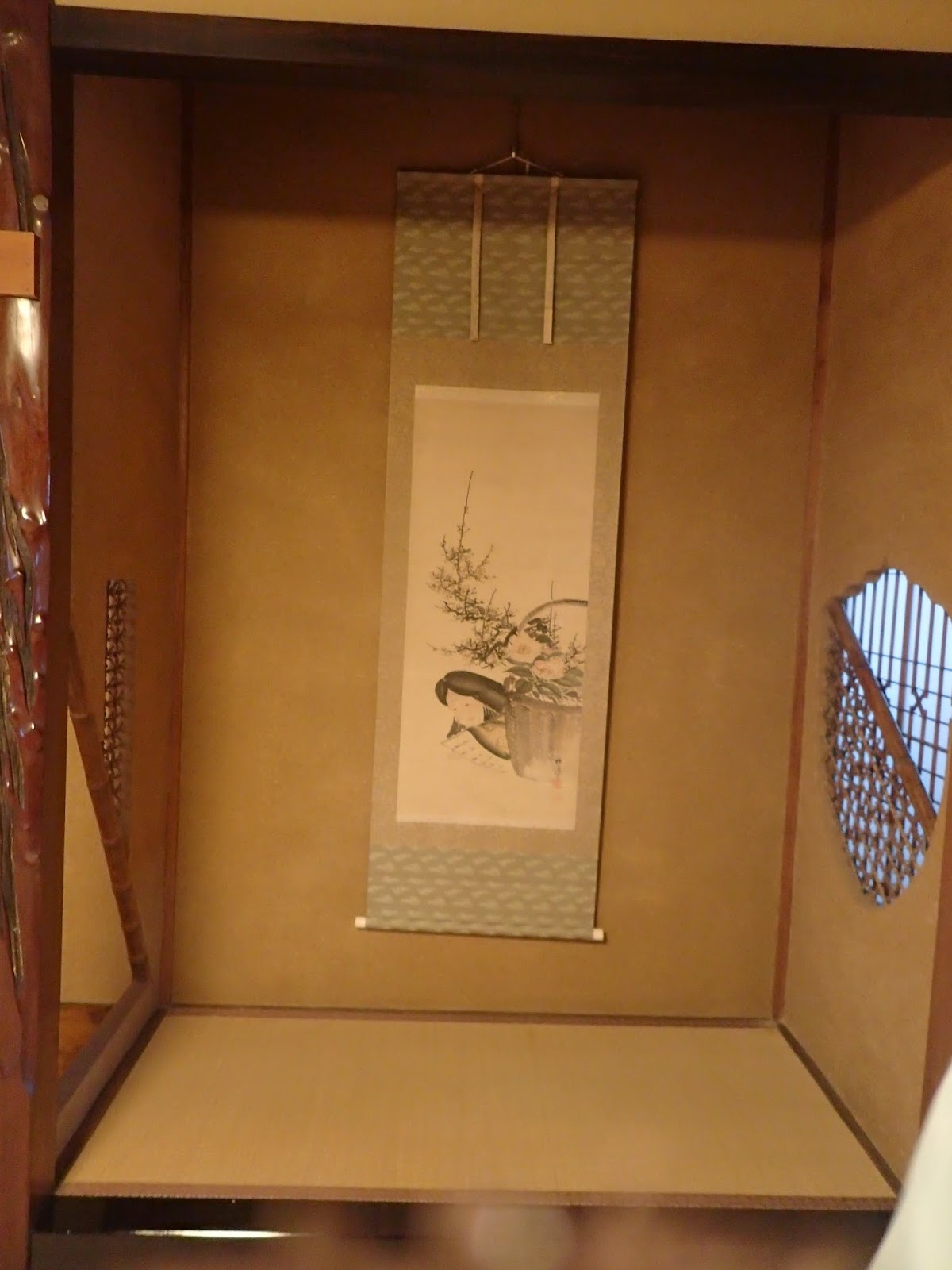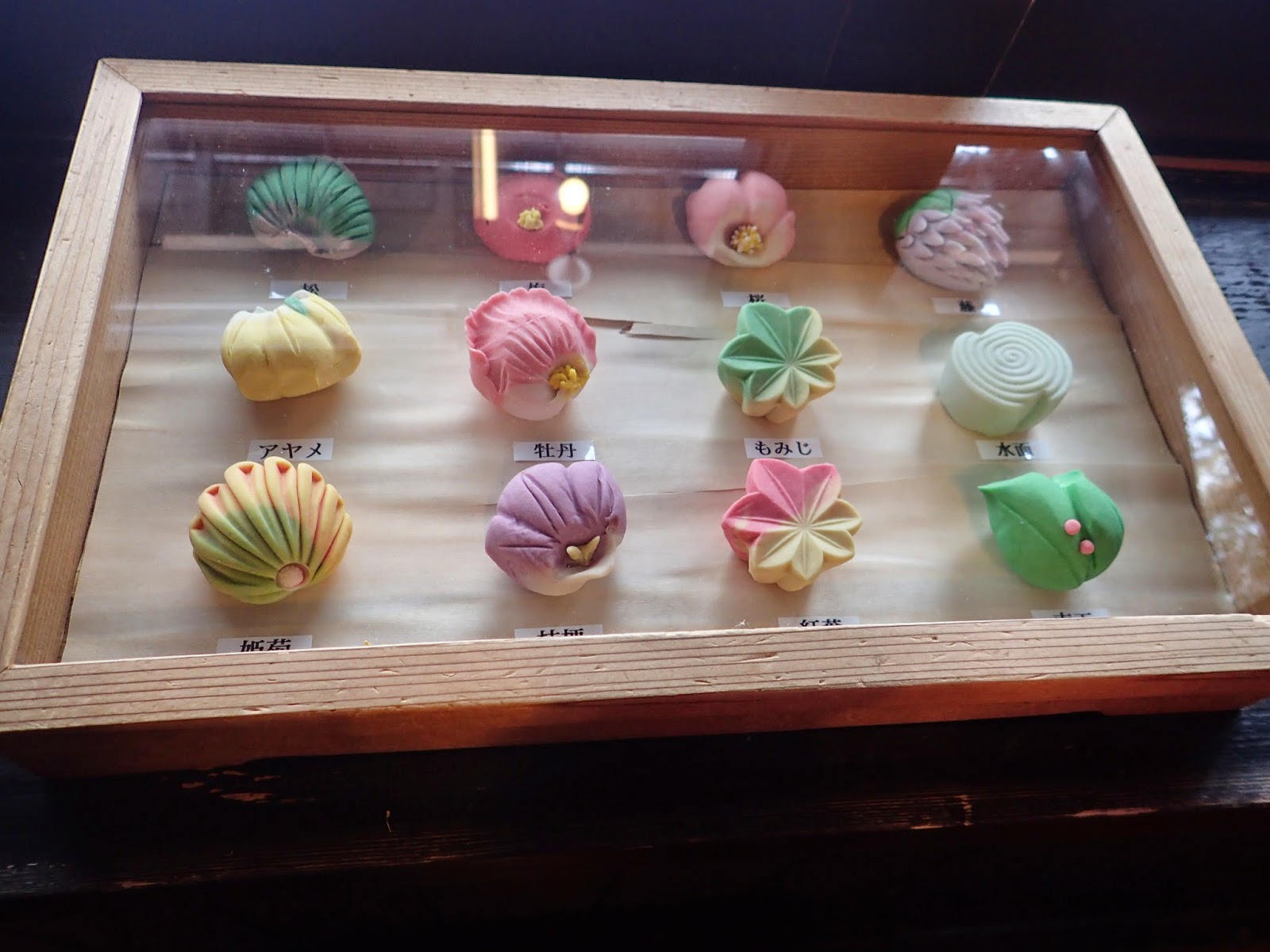Welcome to Oga city. Oga is the birthplace of the Namahage legend. That is why, in the main entrance of this city, they built two giant Namahage statues.
 |
| Welcome to Oga... |
Some of the mask, looks so funny, but some looks sooo scary. The only thing that make me uncomfortable with this exhibition that they rolled on Namahage's voice (which is so loud and scary for me :p).
In Namahage costume booth, we can change into Namahage as well, the staff member will help us if we want to take pictures in Namahage costume. My friend, Darwin tried the costume. Free of charge for this booth.
 |
| before |
 |
| after |
In this Namahage's center, there is a house where we can witness the ritual in a role play. I went there to watch the ritual. It was sooo scary for me.. Not the mask, but the voice of that Namahage and the way they open or close the door and hit the wall with a loud voice (brrrr...)
Detailed Ritual :
Sakidachi ( a man who helps the namahage as they visit villager's homes) calls on each house to make sure that the family member isn't mourning or coping with a serious illness. He also asks if the family just giving birth to a baby this year. If any of those things have happened in the past year, the Sakidachi and Namahage will find another house. If nothing has happened, he will ask if the Namahage may enter. With the permission, several Namahage enter the house. The Namahage stomp around the house, and eventually settle down near the fireplace, where some food and sake served for them.
Namahage begin to talk and ask about the harvest and the health of the older member of the family. The Namahage then inquire about whether or not the older members are being adequately cared by the younger members, and ask if everyone in the family worked or studied hard in the passing year. They warned the head of the family, that they would be very angry if someone in this family was lazy and disobedient. The head of the family tells the Namahage that everyone in the family worked very hard and he ask Namahage to bless their harvest in the coming year.One of Namahage then realized that the head of the family didnt tell the truth, and one Namahage open a book and examine it. Since the Namahage can see all that happens in the village from the top of the mountain, they record all the things that people did in this secret book. The Namahage raises their voice (this one that makes me scared) and decide that they will take their lazy children and their mother to the mountain. The head of the family apologizes, and tries to calm the Namahage by giving them more food and sake because he doesnt want his family taken by Namahage. He begs the Namahage and promises to do his utmost to improve the attitudes of both his children and his wife. Finally, the namahage believe that the head of the family will work hard to improve the attitudes of his family. Namahage instruct the head of the family to call the Namahage back anytime (by clapping his hand three times while facing the mountain) just in case the children and his wife do not listen to him.
In Oga, Namahages are believed to chase away bad luck and evil spirits with their loud voices and noisy actions.
 |
| inside the house, when the Namahage came |
 |
| he stomp with a very loud voice |
 |
| thats their secret book |
if you want to see the ritual, you can see here :
https://www.youtube.com/watch?v=nTCoMzTYC2Y
I was lucky, because on that day, they offered free ticket to enjoy both, namahage exhibition and Namahage house. The free ticket given at 4 o'clock.
And besides that, at 6.30, i watched Namahage Festival. The festival begins with the ritual where man transformed into Namahage. This is followed by the mini drama about the ritual. Finally, fifteen Namahage march down from the mountain and approached all the audiences, especially children, it was the climax of the day. I was shocked, petrified yet anxious with this ritual.
 |
| Transformation ritual |
 |
| drama |
 |
| when they came from the mountain |
 |
| last performance of Namahage |
 |
| relieved that finally i can leave that place hahahaha |































































